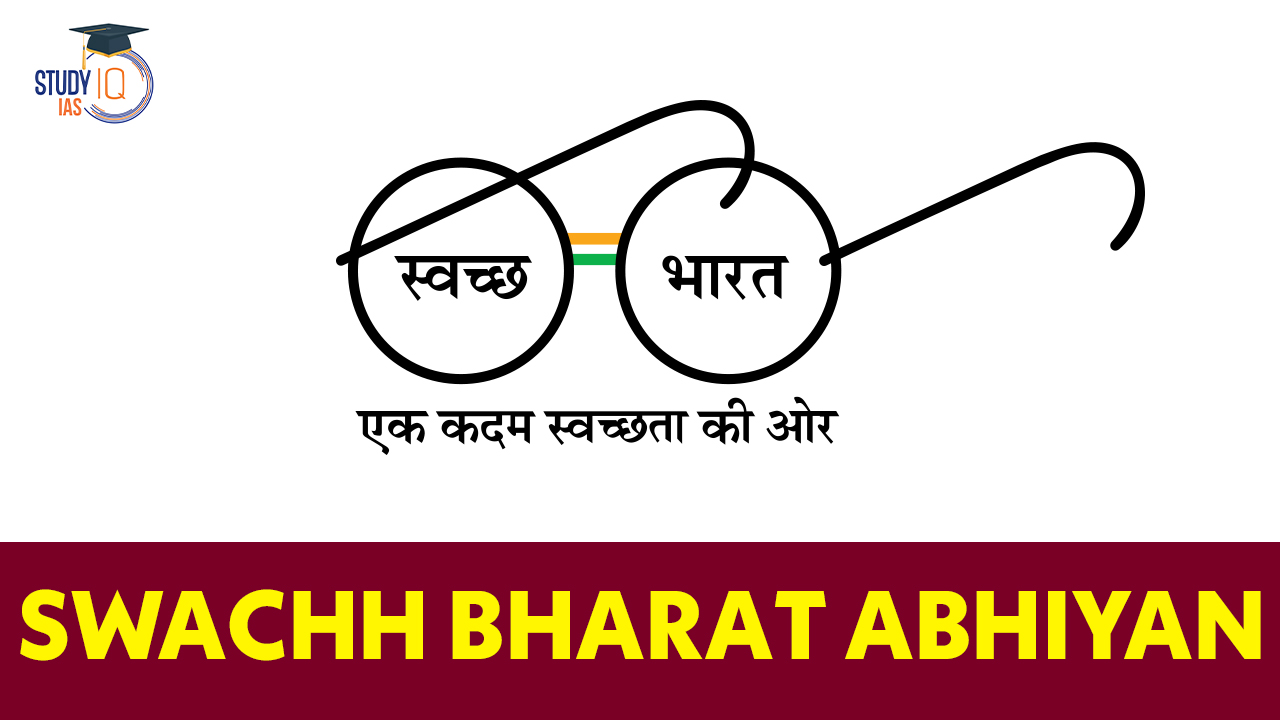Table of Contents
The Swachh Bharat Abhiyan (Clean India Mission), launched by Prime Minister Narendra Modi on October 2, 2014, marked a significant turning point in India’s sanitation and cleanliness landscape. The initiative aimed to transform the nation into a cleaner, more hygienic environment by addressing the challenges of open defecation, waste management, and overall sanitation. As the mission completes a decade, it is essential to evaluate its achievements, challenges, and future directions.
Swachh Bharat Abhiyan
India, a land of rich cultural heritage and diverse landscapes, has always been admired for its historical significance, architectural marvels, and breathtaking natural beauty. However, it has also faced challenges related to cleanliness and sanitation for decades. Recognizing the urgent need for a clean and healthy environment, the Indian government launched the Swachh Bharat Abhiyan on October 2, 2014. The aims and objectives of Swachh Bharat Abhiyan is to transform India into a cleaner, more hygienic nation and has since become a symbol of national rejuvenation.
Swachh Bharat Abhiyan Overview
On October 2, 2014, the Prime Minister of India launched the Swachh Bharat Mission (SBM), Swachh Bharat Abhiyan’s aim or objective was to eliminate open defecation across the country by 2019.
| Aspect | Description |
|---|---|
| Launch Date | October 2, 2014 |
| Prime Minister | Narendra Modi |
| Objective | To achieve universal sanitation and cleanliness by eliminating open defecation, improving waste management, etc. |
| Components |
|
| Key Achievements |
|
Two phases of Swachh Bharat Abhiyan
The Swachh Bharat Abhiyan was executed in two distinct phases. The first phase was carried out until October 2019, while the second phase spanned from 2020-21 to 2024-25. The objectives of these phases were anchored in completing the groundwork laid in Phase 1.
The paramount goal of the mission was to achieve an open defecation-free (ODF) India by October 2, 2019, coinciding with the 150th birth anniversary of Mahatma Gandhi. Over this period, approximately 89.9 million toilets were estimated to have been constructed. The inaugural phase aimed at not only eradicating the practice of manual scavenging but also fostering awareness and transforming behavioral norms related to proper sanitation practices. Furthermore, it aimed to enhance local-level capacities.
The subsequent phase of the mission, Phase 2, had a twofold focus: promoting the maintenance of an open defecation-free status and enhancing the management of both solid and liquid waste. It also prioritized the improvement of the livelihoods of sanitation workers. The mission aligned itself with Target 6.2 of the United Nations’ Sustainable Development Goals, established in 2015, which seeks to demonstrate advancements in sanitation. Below we have explained different phases of Swachh Bharat Abhiyan.
Swachh Bharat Mission (Gramin) Phase-I
When Swachh Bharat Mission (Gramin) was launched on October 2, 2014, the rural sanitation coverage in the country stood at 38.7%.
Since the commencement of this initiative, over 100 million individual toilets have been built. Consequently, rural regions across all states proudly declared themselves Open Defecation Free (ODF) by October 2, 2019.
Swachh Bharat Mission (Gramin) Phase-II
The emphasis of Phase-II lies in ensuring the enduring success of the accomplishments achieved in Phase-I. This phase places significant importance on the establishment of effective infrastructure for the management of Solid/Liquid & Plastic Waste (SLWM) in rural India.
Implemented from 2020-21 to 2024-25 in a concerted mission mode, this phase is allocated a comprehensive budget of Rs. 1,40,881 crores.
Under the ODF Plus category, SLWM will be meticulously monitored using outcome indicators for four crucial domains:
- Plastic waste management
- Biodegradable solid waste management (including the management of animal waste)
- Greywater (Household Wastewater) management
- Fecal sludge management
Read about: Midday Meal Scheme
Swachh Bharat Mission (Grameen) Significance
- Employment and Economic Upliftment: By constructing household and community toilets and establishing waste management infrastructure, the mission generates employment, invigorating the rural economy.
- Effective Waste Management: The mission addresses the challenge of solid and liquid waste management in rural areas. This leads to marked advancements in the health and hygiene standards of rural communities.
- Gram Panchayat Empowerment: In its second phase, SBM (Grameen) empowers Gram Panchayats by providing increased access to funds. These Panchayats are mandated to allocate half of their 15th Finance Commission funds, reinforcing local governance. Additionally, an extra Rs 5 lakh allocation for waste management via the Mahatma Gandhi National Rural Employment Guarantee Scheme further bolsters community initiatives.
Swachh Bharat Mission-Urban (SBM-U)
Swachh Bharat Mission-Urban (SBM-U), initiated on October 2, 2014, by the Ministry of Housing and Urban Affairs, is a national endeavor aimed at fostering cleanliness, sanitation, and effective waste management within urban areas of India.
The program’s primary objective is to cleanse and eliminate open defecation from cities and towns across the country. The implementation of Swachh Bharat Abhiyan is divided into distinct phases.
Swachh Bharat Mission-Urban 1.0
The initial phase of SBM-U revolved around the pivotal goal of achieving Open Defecation Free (ODF) status across urban India. This entailed providing access to sanitary facilities and encouraging a shift in behavioral norms.
Significant success marked this phase, as urban India achieved the ODF status, with all 4,715 Urban Local Bodies (ULBs) successfully eliminating open defecation. Among these, 3,547 ULBs advanced to ODF+ status, signifying the presence of hygienic community and public toilets. Additionally, 1,191 ULBs progressed to ODF++ status, indicating comprehensive fecal sludge management. Furthermore, 14 cities garnered the prestigious Water+ certification by effectively treating wastewater and maximizing its productive reuse.
Swachh Bharat Mission-Urban 2.0 (2021-2026)
Building upon the accomplishments of the initial phase, SBM-U 2.0 emerged as a continuum of its precursor. This second phase adopted a broader perspective, aiming not only for ODF+ and ODF++ standards but also striving for garbage-free urban regions.
Central to SBM-U 2.0 were sustainable sanitation practices, efficient waste management strategies, and the promotion of a circular economy model. The endeavor focused on harnessing waste as a resource, minimizing waste generation, and optimizing waste processing.
Achievements of Swachh Bharat Abhiyan
- Open Defecation Free (ODF): Urban India accomplished the monumental feat of becoming open defecation-free. All 4,715 Urban Local Bodies eradicated open defecation.
- ODF+ and ODF++: A total of 3,547 ULBs attained ODF+ status, boasting functional and hygienic community and public toilets. Moreover, 1,191 ULBs achieved ODF++ status, showcasing effective fecal sludge management.
- Water+ Certification: Fourteen cities secured the Water+ certification, emblematic of wastewater treatment and its judicious reuse.
- Waste Processing: Remarkable progress was witnessed in waste processing, surging from 17% in 2014 to an impressive 75% in 2023. Aided by comprehensive door-to-door waste collection in 97% of wards and source segregation practices in nearly 90% of wards across all ULBs.
- Garbage Free Cities (GFC): The GFC-Star rating protocol, launched in January 2018, expanded from 56 cities in its initial year to 445 cities, with an ambitious target of achieving at least 1,000 3-star GFC by October 2024.
The budget for 2023-24 reaffirms India’s commitment to cultivating a circular economy by emphasizing the scientific management of both dry and wet waste. This resolute focus underscores the nation’s dedication to a cleaner, more sustainable urban landscape.
Funding Pattern
- The PM Swachh Bharat Abhiyan’s funding model involves cooperation among the Ministry of Drinking Water and Sanitation, the Ministry of Rural Development, and states.
- Funding ratio is 75:25 for regular states and 90:10 for North Eastern states.
- Eligible rural beneficiaries receive Rs. 12,000 for constructing individual household latrines.
- The initiative encompasses water storage facilities.
- Funding sources include government budgets, international institutions, CSR initiatives, and the Swachh Bharat Kosh.
Special initiatives launched under the Swachh Bharat Mission
The Special initiatives launched under the Swachh Bharat Mission are:
| Special initiatives launched under the Swachh Bharat Mission | |
| Initiative | Description |
| Swachh Swasth Sarvatra | Linking sanitation with health indicators to improve hygiene practices in healthcare facilities. |
| Swachh Iconic Places | Enhancing cleanliness and sanitation at cultural and heritage sites to improve visitor experience. |
| Swachh Bharat Summer Internship | Engaging youth as summer interns to spread awareness about cleanliness and sanitation. |
| Swachh Bharat Pakhwada | Time-bound campaigns intensifying cleanliness efforts across sectors during specific fortnights. |
| Swachh Survekshan | Annual survey ranking cities based on sanitation efforts, promoting competition for cleanliness. |
| Waste to Wealth | Promoting waste management for economic value through recycling and resource recovery. |
| Swachh Vidyalaya Abhiyan | Improving sanitation in schools, providing clean toilets to support education and student health. |
| Gandagi Mukt Bharat | Campaign against waste, focusing on waste management, proper segregation, and responsible disposal. |
| ODF Plus and ODF++ | Sustaining sanitation improvements, addressing waste management for cleaner and hygienic communities. |
Obstacles to the Success of Swachh Bharat Mission
- Behavioral Change Complexity: Achieving sustainable behavioral change towards sanitation practices poses a complex challenge, requiring a shift in ingrained habits and cultural norms.
- Health Impact Tracking: The lack of a clear mechanism to track the direct health impacts of improved sanitation makes it difficult to showcase the mission’s positive effects on public health.
- Data Inadequacy: The absence of comprehensive and reliable on-the-ground data hampers accurate assessment and progress monitoring, impeding evidence-based decision-making.
- Varied Regional Dynamics: India’s diverse cultural and regional contexts demand tailored approaches, making it challenging to implement a standardized solution across the entire country.
- Infrastructure Development: Rapid urbanization and inadequate infrastructure development in some areas pose hurdles in achieving universal access to sanitation facilities.
- Financial Sustainability: Ensuring long-term financial sustainability for sanitation infrastructure maintenance and operation remains a concern, especially in resource-constrained areas.
- Behavioral Resistance: Overcoming resistance to behavioral changes, particularly in rural and less-aware communities, requires persistent education and engagement efforts.
- Open Defecation Tradition: Deep-rooted open defecation practices in certain regions hinder progress towards total sanitation coverage.
- Limited Awareness: Lack of awareness about the importance of sanitation and proper waste disposal continues to be a barrier, necessitating extensive awareness campaigns.
- Inclusivity: Ensuring equitable access for vulnerable populations, such as women, children, and disabled individuals, requires targeted strategies to overcome accessibility challenges.
- Technology Adaptation: Effective adoption and implementation of innovative technologies for waste management and sanitation can be hindered by lack of awareness and training.


 Tigers Outside Tiger Reserves (TOTR) Sch...
Tigers Outside Tiger Reserves (TOTR) Sch...
 Small Savings Schemes: Possible Interest...
Small Savings Schemes: Possible Interest...
 10 Years of AMRUT Scheme: Objectives, Ke...
10 Years of AMRUT Scheme: Objectives, Ke...





















